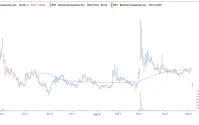The scene in the Lincoln federal courthouse was, by all accounts, a study in cognitive dissonance. The courtroom was overflowing with supporters from Country Bible church, a congregation that knew Jesse Hill as a board member, a Sunday School teacher, and a married father of three. They were there to vouch for the character of a man who, moments later, would be sentenced to five years in federal prison for his role as an architect in one of the largest bank frauds in Nebraska's history.
This is the narrative trap of cases like these. The story gets framed as a morality play: the good man who did a bad thing. We focus on the tearful apologies, the letters of support, and the judge’s sharp observation that there seem to be “two sides” to Jesse Hill. But this focus on character, on the delta between public piety and private crime, obscures a far more troubling and data-driven truth. The real story isn’t about one man’s dual nature. It’s about the systemic, repeated, and frankly baffling failure of nearly two dozen financial institutions to perform basic quantitative due diligence.
While Jesse Hill heads to prison, the loan officers and risk committees at almost 20 different banks who enabled this $45 million scheme remain anonymous. And that’s a failure of accounting that should concern us all.
The Mechanics of a Spreadsheet Deception
The scheme itself wasn't particularly complex, which makes the outcome all the more alarming. Aaron Marshbanks, a charismatic local businessman and former star athlete, needed money. A lot of it. He was covering what court records describe as "catastrophic" investment losses from 2022 (a year notorious for wiping out crypto investors) and servicing payments on previous loans. The entire operation was a classic Ponzi-style debt spiral, needing ever-larger injections of new capital just to stay afloat.
This is where Jesse Hill, in his capacity as a financial advisor, became indispensable. According to the U.S. Attorney's Office, Hill’s role was to provide the air of legitimacy. He created fraudulent financial statements showing Marshbanks had sufficient assets to secure the loans. He would then personally accompany Marshbanks to meetings with bankers, presenting the fabricated documentation and offering professional assurances.
The scale is staggering. They sought over $45 million and left the banks with more than $30 million in actual losses—a figure that, to be more precise, wiped out the entire annual earnings and employee bonuses for some of the smaller community banks involved. This wasn't a single lapse in judgment at one institution. It was a contagion of credulity that spread across Nebraska, Iowa, and as far as Wyoming and Louisiana.
The fraud's architecture is almost elegant in its simplicity. Hill and Marshbanks weren't hacking into systems or forging currency. They were exploiting a fundamental vulnerability in the banking process: the willingness to accept an advisor's prepared statements as gospel. They built a Potemkin village of spreadsheets, and nearly 20 banks decided to finance it without ever sending an inspector to check the foundations. How does that happen? And why did no one, at any point, pick up the phone to independently verify the existence of these fictitious accounts Hill claimed Marshbanks held?

Reputation as an Unaudited Asset
In court, the defense leaned heavily on Hill’s reputation. His attorney, Pat McInerny, called the outpouring of community support the “clearest indication of what’s waiting for Mr. Hill when he’s released.” Hill himself, in a lengthy statement, painted a picture of a man who "didn't have the courage to challenge" the deteriorating Marshbanks. The narrative presented was one of a good man swept up by a stronger, more reckless personality.
And this is the part of the analysis I find genuinely confounding. The defense presents community support as a mitigating factor. But from a risk perspective, wasn't that very reputation the primary tool of the fraud itself? It was the collateral of trust that Marshbanks and Hill leveraged to devastating effect. Judge Susan Bazis hit on this when she noted Hill's conduct was "the exact polar opposite" of his public persona, but the implication goes deeper. His persona wasn't just a mask; it was an active financial instrument, a key that unlocked vaults. The banks weren't just lending against phantom assets; they were lending against a phantom man.
I've looked at hundreds of fraud filings, and this particular element is unusual. It's not just that Hill had a good reputation; it's that the banks appear to have accepted this qualitative data point in lieu of quantitative verification. This is compounded by an easily discoverable fact: this wasn't Hill's first encounter with regulators. His own IAPD record shows a $7,500 penalty paid in 2018 to the Nebraska Department of Banking and Finance for selling unregistered securities and making false statements to investors.
A five-minute search by any competent investment advisor representative or compliance officer would have raised a bright red flag. Why was this missed, or ignored, by so many? Was the allure of a big loan to a prominent local figure so powerful that it short-circuited the most basic risk management protocols?
The death of Aaron Marshbanks from a drug overdose in a parking garage in 2022 was the tragic, chaotic event that finally brought the scheme crashing down. It left Hill, as the judge said, "holding the bag." He forfeits his interest in a $900,000 villa in Puerto Rico and a share in a multi-million dollar turboprop plane. He will spend five years in prison. Justice, in a narrow sense, has been served. But the larger questions remain unanswered, and the system that allowed the fraud to flourish remains unchanged.
A Failure of Quantitative Due Diligence
Ultimately, the story of Jesse Hill isn't a story about a crisis of faith or a man with two faces. It's a story about a crisis of verification. The focus on Hill’s church community, his family, and his tearful apology is a narrative misdirection. The core failure here wasn't moral; it was mathematical. It was a failure of process, of cross-referencing, of asking for primary source documents instead of taking a registered investment advisor at his word—especially one with a prior regulatory sanction.
While Jesse Hill is held accountable for his "deliberate and calculated" actions, the dozens of loan officers and risk committees who approved these loans based on flimsy, unverified data face no public consequence. Their collective failure was just as integral to the $30 million loss as Hill's fabricated spreadsheets. In this equation, Jesse Hill was a single variable. The banking system itself was the flawed algorithm that allowed him to run wild. He is going to prison, but the vulnerability he exposed remains at large.









